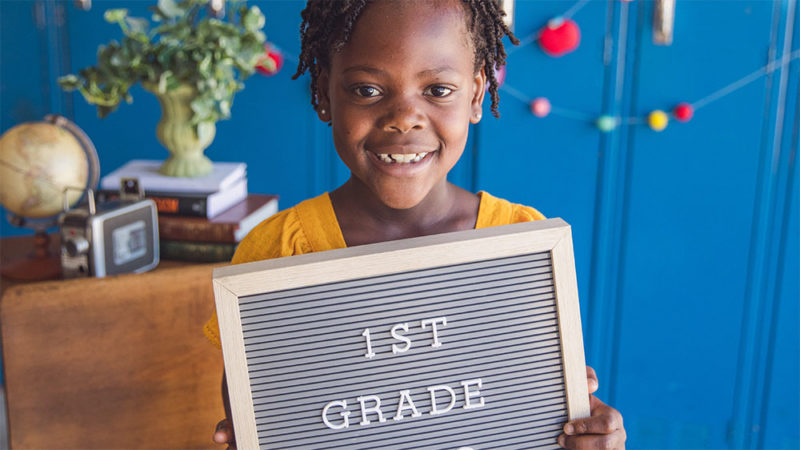Helping Your Adopted Child Transition to School

Starting at a new school is hard for any child but the transition can be especially hard for adopted children for whom their entire lives have recently changed. Luckily, there are a few ways adoptive families can prepare to ease the transition.
Here are 6 ideas:
1. Establish a Routine Early
Long before the first day of school, begin establishing a routine. Have your child run through the motions of a school day from wake-up times to getting dressed, having breakfast, packing a lunch, carrying a backpack, and walking to the school bus. The more familiar your child is with the routine, the more comfortable they’ll feel on their first day.
2. Attend Orientations
Most school districts have days when your child’s school will be open for orientation. Make sure you visit the school! Having toured the school buildings and grounds with you will help your child feel safe, even when you’re not there. Point out activities they can expect to take place in different spaces and if you already know where their classroom will be, make sure your child knows the way there and back to you.
3. Write a Letter to Your Child’s Teacher
Teachers don’t receive any special training related to children who are adopted and lamentably, the curriculums they’re asked to teach often lack inclusion of non-traditional families. This means that teachers may not know the best language to broach the topic of adoption. They may not identify that your child’s behavior is related to trauma. They may not realize that traditional assignments such as creating a family tree, bringing in baby pictures, or discussions of inherited traits, will prove difficult for your child. Giving your child’s teacher basic information and the opportunity to ask questions, can be a great way to ease your child’s transition. For example, “Some school assignments related to traditional families such as creating a family tree or bringing in baby pictures, will be hard for us. We would greatly appreciate a heads up and some flexibility to adapt the assignment to fit our family.”
4. Prepare Your Child for the Questions They’ll Be Asked
You were probably asked a million questions when you first told your friends and family that you were adopting. As peers discover that your child is adopted, they’ll be asked a million questions, too. This will happen very quickly if your child looks or sounds different from their peers and your child should be prepared. Together, you can decide what type of questions they will answer and what type they won’t. How will they politely communicate that their adoption story is private? There are no right answers. Your family should practice boundaries and phrases that feel comfortable for you
5. Let Your Child Choose Their School Supplies
One way to give your child a little control over their school experience is to let them choose their own school supplies. This is important because it’s a lack of control that contributes to children feeling anxious about school, and their book bag, clothes, and other supplies can offer them a sense of empowerment over their day.
6. Plan for Goodbyes
Goodbye might be one of the harder moments of the day. Plan for it! What will you all need to say goodbye? Perhaps an ‘I love you’ or a special handshake. Perhaps a memento to keep close by until the time you’re together again. Practice saying goodbye to make it easier when the first day of school is finally here.
Hopefully, these tips help ease your child’s transition to school but above all, remember that it’s most important for your child to heal from trauma and develop felt safety and healthy attachment with your family. If your child isn’t there yet, school can wait!